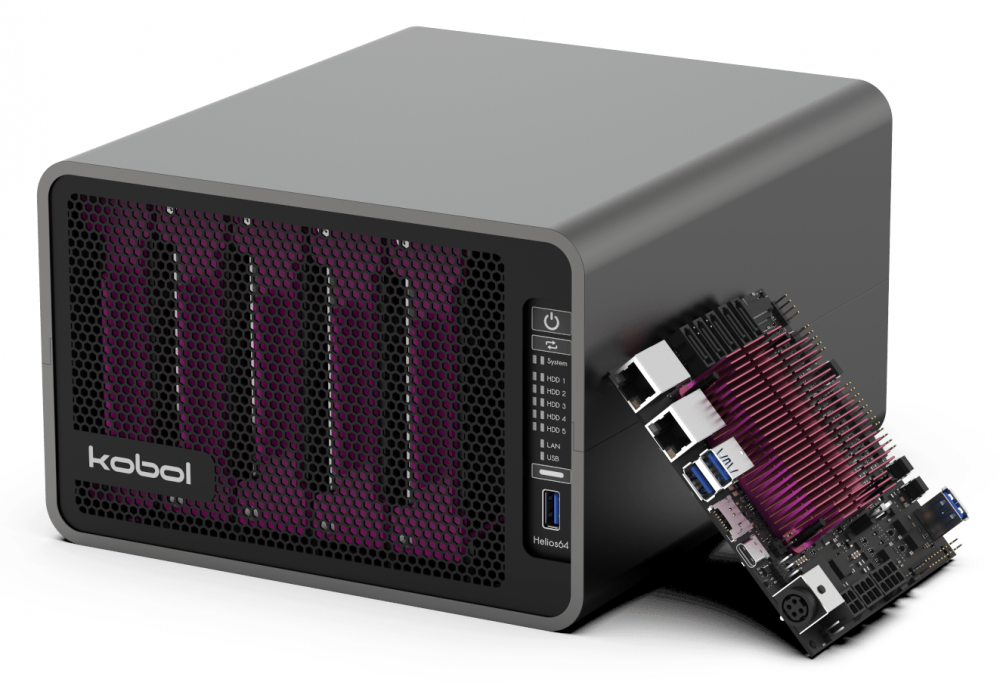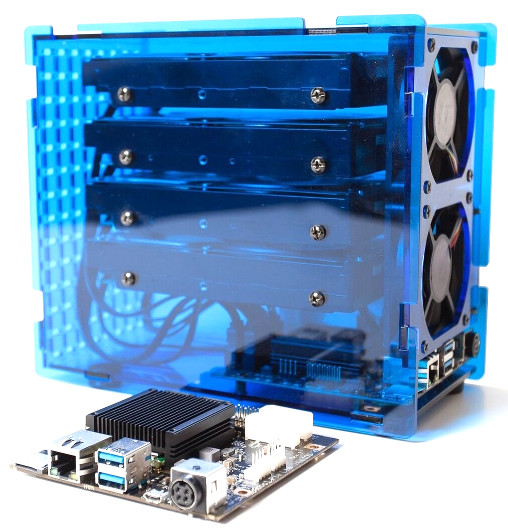-
Posts
580 -
Joined
-
Last visited
Content Type
Forums
Store
Crowdfunding
Applications
Events
Raffles
Community Map
Everything posted by gprovost
-
Slow write speeds. Helios64. (tested SATA and USB UAS DAS)
gprovost replied to slymanjojo's topic in Rockchip
Could be 2 things, SMP affinity not applied properly or SMB conf requires some fine tuning. Are you using OMV ? Can you try to similar test but using FTP, this way we can see if it's SMB fine tuning issue. -
Thanks for keeping us updated with some data. We are still having difficulty to find a root cause for some of the instability reported. If you still face same instability with LK5.9.y please experiment with governor in performance mode.
-
2.5Gbps port, or USB 1Gbps Startech unlink during transfers
gprovost replied to Demodude123's topic in Rockchip
A bit hard based on your message to know clearly what is connected to what at which link speed. Hmmm that's interesting info. Do you see the same issue (link drop during smb access) when using the Helios64 1GbE port ? Just to arrow down the problem to purely USB-to-LAN. Going to try to same thing on my side i have similar adapter based ax88179_178a -
Armbian 20.11 LK5.9 should be released this month. You can already find some DEV image here : https://minio.k-space.ee/minio/armbian/dl/helios64/nightly/ Maybe you can give it try regarding the USB-C DAS feature.
-
Yes, as wisely advice by SIGSEGV, could you give a try to latest test build (aka DEV images) which are based on Linux Kernel 5.9. These DEV images are actually what will be soon the new Armbian release 20.11
-
RK3399 commercial grade is rated as 0 - 80C ambient operating temperature. To not be confused with max Temperature junction (Tj) which is 125C ;-)
-
Looking into the fancontrol configuration, I think we were way too conservative on the settings making the fan going too early in higher RPM. Plus we are not taking into consideration that the heatsink is already doing a pretty good job in passive mode. I would recommend the following fancontrol settings until we provide a way to control the fan based on HDD temp instead : # Helios64 PWM Fan Control Configuration # Temp source : /dev/thermal-cpu INTERVAL=10 FCTEMPS=/dev/fan-p6/pwm1=/dev/thermal-cpu/temp1_input /dev/fan-p7/pwm1=/dev/thermal-cpu/temp1_input MINTEMP=/dev/fan-p6/pwm1=40 /dev/fan-p7/pwm1=40 MAXTEMP=/dev/fan-p6/pwm1=110 /dev/fan-p7/pwm1=110 MINSTART=/dev/fan-p6/pwm1=60 /dev/fan-p7/pwm1=60 MINSTOP=/dev/fan-p6/pwm1=40 /dev/fan-p7/pwm1=40 MINPWM=40
-
I don't really see the point to bother with duct air flow specifically to the SoC. The maximum rated junction temperature of the RK3399 is 125C. Currently on a system loaded at 100%, with PWM value of 100 on both fan which is relatively quiet (ambient room temp 26C), SoC temperature is around 73C and all HDDs are 29-30C. It's completely OK to have the SoC running at 72C during maximum load till it doesn't increase heat in the enclosure and impact HDD temp. In idle the SoC will immediately go back to 40-43C.
-
In the upcoming Armbian 20.11 (Linux Kernel 5.9) USB-C DAS mode will be supported. For now only Linux Kernel 4.4 supports it, you can see how to set it up on our wiki : https://wiki.kobol.io/helios64/usb/#usb-under-linux I think this section of our wiki is not easy to find, we will have to move it a more obvious place
-
@Jaques-Ludwig As explains by @SIGSEGV you still need to store the bootloader somewhere else than USB because the system cannot boot directly from USB. So in our wiki we present the following approach : Bootloader on eMMC, Root file System on USB. Very soon we will also explain how to store bootloader SPI, but honestly not really major added value than the above approach. Technically you need to use jumper P10 to disable eMMC to be sure the system won't boot from it. However take note the 1st stage bootloader (aka SPL) will always try to first find 2nd stage bootloader (aka U-boot) on microSD first, then eMMC. So it means that even if system boot from eMMC, if there is a microSD card inserted with a 2nd stage bootloader (aka U-Boot), the system will boot the system from microSD card... therefore you don't really need to bother about P10 jumper. Hope I'm not confusing more by trying to explain more :-/
-
For now fan speed control is based on SoC temperature which is to be honest not the smartest approach since SoC temp is not representative of the ambient temp of the enclosure. But it was the wisest approach to make the baseline Armbian image clean without too many tweaks. What matters the most in a NAS is the HDD temperature since it's what impacts the most the MTBF of a storage array. We will provide soon the instruction on how to control the fan speed based on HDDs temperature. This will result in a more constant airflow (less variation in speed) and therefore a more quiet operation. It's actually ok to let the SoC goes a bit high in temperature but no the HDD.
-
SATA issue, drive resets: ataX.00: failed command: READ FPDMA QUEUED
gprovost replied to ShadowDance's topic in Rockchip
That's a very useful information. Slot 3 and Slot 5 are on the same power rail. Such issue shouldn't happen with the capacitors on the HDD harness. Wondering if this could be some kind of root cause. We need to investigate. -
Yes as mentioned by @SIGSEGV we have added a new wiki page that covers this topic : https://wiki.kobol.io/helios64/install/transfer/
-
We just added 2 new pages on our wiki : Transfer Installed OS - How to transfer your OS install from microSD card to eMMC, USB or HDD/SSD. Troubleshooting - Basic troubleshooting guide when starting with Helios64.
-
Hi, By system freeze, you mean the system hangs and you need to manually reset / power cycle it ? Is the watchdog service running ? systemctl status watchdog.service What the temperature of the SoC during load ? cat /dev/thermal-cpu/temp1_input Just trying to dismiss first any thermal issue. Regards,
-
You need to configure incomplete-dir settings in your transmission conf to point to your array and not the MMC storage. https://github.com/transmission/transmission/wiki/Editing-Configuration-Files incomplete-dir: String (default = default locations) Directory to keep files in until torrent is complete. incomplete-dir-enabled: Boolean (default = false) When enabled, new torrents will download the files to incomplete-dir.
-
Thanks to the Armbian team, we have now this forum club dedicated to Kobol products. Feel free to create new topics to report issues, discuss features or share experience with Helios4.
-
-
-
@jbergler @ShadowDance Can you guys just check that the return value of the following is not 0 cat /proc/sys/net/core/rps_sock_flow_entries Just to be sure that even after you upgraded the system the hw optimization script is being properly executed. You mean even after clean install you still have the instability issue ?





